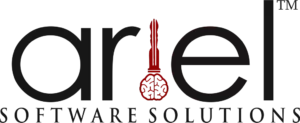
Reliable, timely, and smooth software releases are essential to keeping users happy and staying ahead in a competitive market. But achieving this requires more than just deploying updates—it’s about managing a release process that reduces risk, ensures quality, and aligns with overall project goals. Effective release management using Azure DevOps offers a suite of tools and practices that turn release management into a seamless, strategic process. From automated pipelines to robust testing and rollback capabilities, Azure DevOps enables teams to streamline every step, ensuring faster, more reliable deployments.
If you’re new to DevOps practices, be sure to check out our article, “What is DevOps and Why DevOps Really Matters?”, where we dive deeper into how DevOps enables faster software delivery.
This guide dives into how to set up effective release management with Azure DevOps. We’ll explore practical strategies and technical insights that cover everything from configuring release pipelines to leveraging automation, ensuring each release is not only efficient but also consistent. Whether your team is handling routine updates or complex rollouts, these strategies will help you optimize and control every stage of the release journey.
Understanding Release Management in Azure DevOps
Release management refers to the coordinated process of planning, scheduling, and deploying code to production environments. With Azure DevOps, release management becomes a well-defined process in which each stage of a release is reflected and automated to cut down on manual effort and human error. This keeps the development team’s code quality intact while quickly responding to any issues and focusing more on innovation.
Key Features of Azure DevOps for Effective Release Management

Azure DevOps brings together a number of tools under one roof to make release management very convenient, which gets the teams to focus on what really matters: delivering value.
- Azure Pipelines: Pipelines can be set up for continuous integration and continuous delivery by automating code builds and deployment. YAML-based pipelines manage version-controlled configurations; the Classic Pipelines provide a way for customizing visual forms for flexible pipeline designs.
- Release Pipelines: Azure DevOps Release Pipelines offer a multimodal workflow structure, which means it empowers deployment to multiple environments with code. Whether you’re deploying to a development environment, QA environment, staging environment, or production environment, Release Pipelines offer clear visualized workflows with every release step that remains organized and efficient.
- Multi-environment Configuration and Approvals: It usually needs a different configuration in each environment. Environment-specific variables make it possible in Azure DevOps along with critical approval gates at appropriate points to ensure validated code moves, which reduces the chances of errors.
- Azure Test Plans: Azure Test Plans can connect direct automated testing into the release workflow. Starting from a unit test to the end-to-end test, it ensures that the code is well-tested before placing it in production.
- Version Control with Azure Repos: In Azure Repos, version control supports Git for branching, pull requests, and reviews, and helps to ensure that only the best code is moved into deployment.
Step-by-Step Step Guide to Effectively Set Up Release Management in Azure DevOps
Define Your Release Strategy:
A well-defined release strategy is foundational. Start by determining:
- Release Cadence: Consider how often releases should happen—whether it’s weekly, bi-weekly, or on-demand.
- Deployment Models: Choose a deployment model that matches your needs. Options include blue-green deployments (where code is deployed to a duplicate environment before switching live), canary releases (gradual roll-out to a subset of users), or rolling deployments (incremental release across server clusters).
Design and Configure Pipelines:
With your strategy in place, create both build and release pipelines:
- Build Pipelines: Define a build pipeline that compiles code, runs unit tests, and packages the build. Automating these steps reduces repetitive manual tasks and ensures consistency.
- Release Pipelines: Set up release pipelines for each environment in your workflow.Each stage—development, testing, staging, and production—should be configured to deploy code with pre-set conditions and approvals to maintain quality control.
- Allow multi-stage approvals and environment variables: Using Azure DevOps’ environment-specific configuration options, you can set different environment variables and permissions for each stage. Adding approval gates before crucial steps (such as pre-production or production) adds an extra layer of verification. Approvers receive alerts to review and approve deployments, ensuring accountability and preventing unauthorized changes.
- Automate across the entire testing pipeline: Testing is a critical component in maintaining release quality, and Azure DevOps provides robust testing options through Azure Test Plans. Implement various tests—unit tests, integration tests, and UI tests—at different stages to validate code functionality, security, and stability. With automated testing, the pipeline can quickly identify and flag issues early, reducing the likelihood of bugs reaching production.
- Monitor Pipeline Performance and Analyze Metrics: Azure DevOps provides comprehensive insights into pipeline performance through metrics like deployment frequency, lead time for changes, and mean time to recovery (MTTR). These metrics help identify bottlenecks, allowing you to optimize your process. Continuous monitoring not only improves efficiency but also provides valuable insights to streamline future releases.
- Plan for Rollbacks and Recovery: Even the best release plans can hit a snag in production. Through Azure DevOps, you can set up rollbacks to previous builds or releases in case something’s amiss. Rollbacks ensure that an application remains stable and is back in good health quickly while developers troubleshoot the problem, even lessening the downtime of its users and maintaining system reliability.
Technical Best Practices for Maximizing Azure DevOps’ Release Management Capabilities

- Compliance with CI/CD Principles:
CI/CD streamlines the process of releases, and manual intervention decreases because the development cycle is shortened. Every change is automatically verified and deployed during automated builds, tests, and deployments for code quality and faster release.
If you’re also concerned with how your UI development fits into this process, check out “Secrets for Agile UI Design: Unlocking Azure DevOps” for Real-time UI Development to learn how agile methodologies and Azure DevOps can work together for real-time UI development.
- Gradual rollout using Feature Flags:
Feature flags allow you to roll out a new feature to a subset of users before making it fully available. This way, it allows production testing but does not hit all users so gives you real-time feedback and prevents widespread failure.
- Team Collaboration:
Azure DevOps collaboratively does code reviews, pull requests, and even testing with all the tools baked into it, so people from the development, QA, and operations teams are brought together. Hence, check-ins on an ongoing basis and shared feedback among the entire team ensure everyone is in line, and this makes the release quite smooth and efficient.
- Continuously Improve the Pipeline:
When you have performance insights, you may continue improving pipelines over time. Tracking frequency of deployment, error rates, and the time to recover keeps assessing incremental improvements in efficiency and speed without sacrificing quality.
- Automate Documentation:
For every changing release, documentation should be updated. The nice thing about Azure DevOps is that it offers options for automated documentation so that any changes in configurations and approvals are tracked; one can easily see who changed what, and when, and even implement it for audits and compliance.
Conclusion:
The compelling capabilities of CI/CD, automated testing, and a comprehensive set of features related to release management make Azure DevOps an invaluable asset for any organization looking to optimize the process of releases. Whether it’s routine updates or complex, multi-stage deployment scenarios, Azure DevOps has everything teams need to deliver quality code at warp speed with confidence.
At Ariel Software Solutions, we are experts in offering the right, customized Azure DevOps strategy to you, enhancing your configuration, deployment, and everything that falls in between. We can help you today create an efficient, reliable release pipeline that empowers your team to focus on releasing the utmost quality software solution. Whether you’re implementing Azure DevOps for the first time or looking to enhance your current setup, Ariel is here to support you.
Reach out to us today to see how we can transform your release process!




